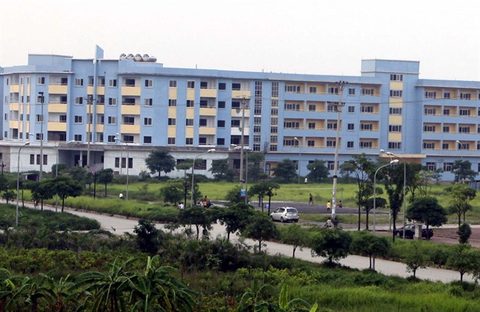Viet Nam’s major cities are gearing up to develop homes for workers, planning to construct small studios of some 25-50sq.m. at the price of 150 million (US$6,500) per unit.

Apartment buildings for workers at Thang Long Industrial Zone, Ha Noi’s Dong Anh District.
The Viet Nam General Confederation of Labour and Ha Noi People’s Committee, at a recent dialogue with workers, said the capital city would develop small apartments at the price of some VND5 million per sq.m., but with adequate infrastructure and facilities such as schools and supermarkets for workers.
This cheered low-income workers but also raised the question on whether the tiny flats would disregard plans and eventually turn into slums.
Previously, the Ministry of Construction gave its nod for the construction of tiny studios of 25sq.m. while developing technical standards for apartments.
Statistics of the Viet Nam General Confederation of Labour showed that there were some 2.8 million workers at industrial zones, of which 1.7 million required homes, but the current supply could met only 8-10 per cent.
The rest were forced to live in rented houses, mainly having poor living conditions, which impacted health and productivity.
Amid high demand of homes for low income workers in major cities such as Ha Noi, HCM City, Binh Duong and Dong Nai, efforts were hastened to build affordable homes for workers.
Southern Binh Duong Province was the pioneer, building apartments worth VND100 million for workers and achieving success.
Earlier this year, HCM City began studying the feasibility of building small affordable homes in the city. The southern city’s People’s Committee recently asked the municipal Department of Construction to prepare the plan of housing development for workers by 2020 and submit it within the second quarter of this year.
Ha Noi’s Department of Construction, meanwhile, recently proposed to check the available land bank for housing development for workers and raised plans for expansion of the infrastructure system and social facilities such as schools and supermarkets. The capital city’s construction department will also study and introduce model worker apartments, ensuring decent living standard at industrial zones.
According to Nguyen Chi Thanh, deputy director of the Viet Nam Association of Realtors, developing affordable homes for workers is feasible if there is available land and special mechanisms for developers.
VNS